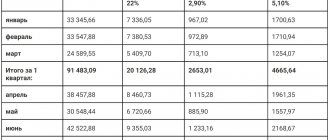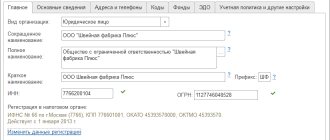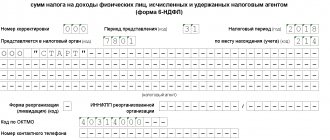Clause 14 of Article 2 of Federal Law No. 259-FZ regulates the operation of road and ground electric transport. According to the document, in order to monitor the work of the driver and the vehicle, it is necessary to issue a waybill, which includes information about the route, the condition of the car and the health of the driver. This document is required for companies and individual entrepreneurs whose activities are directly or indirectly related to the transportation of passengers and/or cargo.
Since 2021, changes have been made to the form of the waybill, new details have been added that should be indicated when filling out - you can use the existing standard form with the addition of additional information reflected in Order of the Ministry of Transport of the Russian Federation No. 368.
Taxi waybill validity period
Some may say that one day is too little, that it is inconvenient to spend several hours traveling to a taxi depot, undergoing a medical examination of the driver and checking the technical condition of the car. Time is money, and lately taxi drivers already have too little of it.
This used to be the case, but now the validity period of the waybill is 10 hours.
Before going further, I advise you to read articles on the topic in which I expressed my opinion about the work:
- Renting a car for a taxi – How much can you earn?
- Working in a taxi with your own car.
- Working in a taxi is the whole truth without embellishment.
- Taxi on credit – Should I take it or not?
I completely agree with you about income, but the culprit for everything is not the requirements of the law, but the greed of aggregators and taxi companies. Some constantly reduce the price of services in the fight for the client. Others don't want to pay wages, just rent. That's why you don't have enough money. The voucher has absolutely nothing to do with it.
Medical examination before going on line
But let's look at this issue from the other side.
Do you want to be driven by a sleepy, sick, or worst of all, drunk driver? I'm sure not. This happens all the time. I can’t vouch for all cities, but in Moscow you encounter a driver who is strictly contraindicated from driving. How many commercials are there on TV: “A taxi driver rammed a bus stop full of people”; “A drunk taxi driver hit a child and disappeared,” and so on. These are not isolated cases. This is precisely why the requirement with a waybill was invented. They will never let you on the line if you are very tired or if you had a good time with friends the day before.
Medical examination at the end of the shift
A taxi driver does not sit under constant surveillance; if previously a dispatcher could call you, then with the arrival of aggregators no one calls you or hears your voice. What's stopping you from drinking another bottle of beer during your shift? Nothing. I won’t speak for everyone, but I personally knew several people who passed by a doctor and immediately ran to the store for a bottle of beer or something stronger. This is fine? No. Therefore, in order to avoid such cases, the requirement for a doctor to pass through at the end of the shift was invented.
Taxi technical check
If you were a customer, would you want to drive a faulty car? Having ordered a car, a complete wreck can easily come to you. Along the way there will definitely be something creaking, knocking, vibrating. It's better to walk.
Let's summarize this section. Will you feel safe if something is wrong with you or the driver? No. That’s why they introduced a requirement for a taxi voucher.
Fines for lack of waybill
Driving without a taxi waybill is a gross administrative violation. People who break the law face financial sanctions. The fine for not having a taxi waybill ranges from 500 rubles to 6 thousand. For drivers who are themselves registered as individual entrepreneurs, much more serious sanctions are provided. The fine in this case can be 13 thousand rubles. The company will have to pay a similar amount for the absence of a stamp on the document indicating the completion of a medical examination.
Waybill for a passenger car according to form 3
The document was developed to monitor the activities of taxi drivers. In addition, its task is to track the amount of fuel and lubricants consumed for reporting.
Waybill for a private car
The work of a taxi driver who is an individual entrepreneur is taken into account using a waybill in the PL-1 form. It differs from the standard document in the smaller number of points to be filled out. The form can be used by an entrepreneur who has documents for the right to engage in transportation.
It is worth noting that an individual entrepreneur has the right to use both sample PL-1 and form 3. In addition, he can independently develop a waybill form.
Working in a popular taxi service is a fairly profitable activity for drivers. It should be noted that large aggregators do not hire employees directly. You can only find employment through a specialized partner. The Cab company offers simple registration, guarantees legal protection and provides professional consulting support for drivers.
What should be on the waybill?
- The first thing that should be in the header is the name of the organization and its form that issued the voucher (individual entrepreneur or LLC);
- Medical and mechanic data, as well as their seals;
- Vehicle data;
- The actual address of the organization where the inspection was carried out and the permit was issued;
- How are the labor relations with the driver formalized?
- Time to start shift;
- Shift end time;
- Equipment of the car when entering the line.
The voucher cannot be a photocopy, since it is available in a single copy. Each must have a unique number. Be sure to fill out all required fields.
What are the consequences of this absence?
If you are stopped by a traffic police officer and you don’t have a ticket, you will get 500 rubles. Whether this is a lot or a little is up to you to decide for yourself. But according to the latest trends, even in Moscow this will equal approximately two hours of your work. Whether it's worth it or not is up to you to decide. Plus, don’t forget about the time you will lose at the traffic police post while they issue you a violation order.
How to fill out a waybill correctly?
To avoid any troubles on the road, fill it out before leaving for your shift and all required fields.
- Name, number and period for which the waybill was issued. (By law, it can be issued for one month, but daily inspections and notes about them are required);
- Full legal data of the owner of the car, as well as the actual address, telephone number and its stamp;
- Car make and registration number;
- Date, time and speedometer reading at the time of entering the line;
- Date, time and speedometer reading at the time of return from the line;
- Driver's full name and signature;
- Medical examination notes;
- Mechanic's inspection notes.
conclusions
In 2021, companies or individual entrepreneurs are required to issue a waybill for each passenger car according to the new rules.
A document for a passenger car is drawn up using standard form No. 3. Now you need to register the make of the vehicle, the type of transportation and messages, the time of release on the line, information about the pre-trip and post-trip medical examination of the driver and the technical inspection of the car.
The sequence of some items was changed, which significantly influenced the structure of the form. Also, from January 1, 2021, it is allowed to keep a journal of travel documents in electronic format.
Taxi voucher for individual entrepreneurs
An individual entrepreneur is the same driver as anyone else who works in a taxi. He is also required to have a properly executed travel document with him. But you may have an advantage over someone who works for the company. You can take special courses, pass an exam and receive a mechanic’s certificate, which is issued for 5 years. And you won’t have to look for a place where you will undergo pre-flight inspection. You will stamp and sign yourself, thereby saving time for work.
Checking vouchers
Companies that issue waybills maintain a database of issued documents. Her data is available to employees of the tax office, MADI and traffic police. Therefore, in the event of a stop, the inspector will be able to easily check the legality of the voucher presented to him by the driver. If it is not in the database, then the taxi driver will have to go through many unpleasant minutes.
Voucher for individual entrepreneurs for a car used for passenger transportation
The rules regarding waybills also apply to individual entrepreneurs who provide services in this direction. When entering the line, they must have a correctly executed document with them. The waybill for self-employed taxis has its own peculiarities. Thus, an individual entrepreneur has the right to independently sign for a mechanic if he has completed training in special courses, after completing which he received a certificate. It is valid for five years. During this time, he can independently inspect the car, thereby saving money and time.
Changes in filling out the waybill for taxis from March 1, 2019
Our legislators gave us another surprise. And if you are used to filling out a ticket the old-fashioned way, you will have to relearn. Let's decide what has changed and how to fill out the waybill correctly. To do this, we need to turn to the new version of the law, and as many as 14 points have changed there. But is the devil as terrible as he is painted? For the most part, nothing new, everything is the same. Let's go point by point from beginning to end; if the changes are minor, we won't even stop.
The first thing that alerted me was the validity period of the waybill. Previously, I already recommended using it for no more than one day, but nothing has changed now. But it became more blurry. Look at the old and new editions, it will become clear to you that the wording is more vague and the employee, when checking, will be able to interpret it in his favor:
It happened before:
Became:
How's the wording? Obviously blurry and too hard to understand. Next we have the design of the header. Previously, the mandatory presence of the seal or stamp of the organization or individual entrepreneur that owns the car was required, but now this rule has been canceled. Since the new edition says nothing about this. My opinion was made because of the self-employed.
It happened before:
Became:
That's basically all that was affected by the changes on March 1. Not scary at all. Really?
How to correctly fill out a waybill for a car of a budgetary institution?
author of the answer,
Question
A budgetary institution has its own passenger transport and driver for official purposes. We use the form of a waybill for a passenger car in accordance with the Decree of the State Statistics Committee of November 28, 1997 No. 78. Is it necessary to fill in the departure and return times on the reverse side when the (address) place is indicated?
Answer
Yes need.
The date (day, month, year) and time (hours, minutes) of the vehicle’s departure from the permanent parking place of the vehicle and its arrival at the specified parking lot are mandatory details of the waybill that must be filled out.
The absence of a return time on the waybill indicates that the driver completed his official trip and did not return the car at the appropriate time. The time of departure and return must be recorded in the waybill. The time of departure and return has a direct connection with confirmation of the duration of the driver’s work: it is possible to determine where the driver was at one time or another, how much time was spent on the road.
The column “Place of departure and destination” is not mandatory to fill out due to the norms of Order No. 152, however, we recommend filling it out, since the destinations along the routes allow you to justify the industrial nature of the trip and confirm the meter readings. General words in the document (“by city”, “by district”, “by region”) should be avoided: they do not allow you to identify the trip. “External” inspectors pay attention to the completion of this column and make a note in the inspection report if the column is not filled out or filled out improperly.
Rationale
Article 9 of the Accounting Law establishes: each fact of economic life is subject to registration with a primary accounting document. It is not allowed to accept for accounting documents documents that document facts of economic life that have not taken place, including those underlying imaginary and sham transactions.
The forms of primary accounting documents are determined by the head of the economic entity on the recommendation of the official responsible for maintaining accounting records. The forms of primary accounting documents for public sector organizations are established in accordance with the budget legislation of the Russian Federation (clause 4 of article 9 of the Accounting Law).
When reflecting the facts of financial and economic activities, budgetary institutions use the forms of primary accounting documents given in Order of the Ministry of Finance of Russia No. 52n*.
It follows from the Order that the basis for reflecting in the accounting records of an institution the disposal of inventories from the accounting accounts is the act of writing off inventories (f. 0504230). Since fuel (gasoline, oils, etc.) is an object of material reserves (based on the provisions of Order of the Ministry of Finance of Russia No. 52n), its write-off can be formalized by an act (f. 0504230).
There are no waybills among the forms contained in this document.
However, by virtue of Art. 1 of the Federal Law of December 10, 1995 No. 196-FZ “On Road Safety”, the main tasks in the field of regulation of road safety are the protection of life, health and property of citizens, the protection of their rights and legitimate interests, as well as the protection of the interests of society and the state by preventing road traffic accidents, reducing the severity of their consequences. Based on paragraph 1 of Art. 20 of this Law, legal entities carrying out activities related to the operation of vehicles on the territory of the Russian Federation are obliged to:
- organize the work of drivers in accordance with the requirements ensuring road safety, comply with the work and rest regime for drivers established by the legislation of the Russian Federation, create conditions for advanced training of drivers and other workers of automobile and ground urban electric transport;
- ensure road safety, analyze and eliminate the causes of road accidents and violations of traffic rules involving their vehicles;
- organize and conduct, with the involvement of health officials, pre-trip medical examinations of drivers, activities to improve drivers’ skills in providing first aid to victims of road accidents;
- ensure compliance of the technical condition of vehicles with road safety requirements and not allow vehicles to be used if they have faults that threaten road safety, ensure the fulfillment of the obligation established by federal law to insure the civil liability of vehicle owners.
In the Ruling of the Armed Forces of the Russian Federation dated 03/09/2017 No. 309-KG17-1326, the opinion was expressed: since the institution conducts activities related to the operation of vehicles and transports workers and goods for its own needs, it is obliged to comply with the requirements established by Art. 20 of Federal Law No. 196-FZ, is required to issue waybills.
In addition, waybills are mandatory when transporting passengers in cases established by the legislation of the Russian Federation. Thus, the Decree of the Government of the Russian Federation dated October 23, 1993 No. 1090 “On the Rules of the Road” states that the driver of a motor vehicle is obliged to have with him and, at the request of police officers, to hand over to them for inspection in established cases a permit to carry out activities for the transportation of passengers and luggage passenger taxi, waybill, license card and documents for the transported cargo, and when transporting large, heavy and dangerous goods - documents provided for by the rules for transporting these goods.
A waybill is a primary accounting document on the basis of which gasoline consumed during the operation of vehicles is written off. Currently, institutions use the following forms of waybills:
- 0345001 “Passenger car waybill”;
- 0345002 “Special vehicle waybill”;
- 0345004 “Truck waybill”;
- 0345005 “Truck waybill”;
- 0345007 “Waybill for a non-public bus.”
Mandatory details and the procedure for filling out waybills are approved by Order of the Ministry of Transport of Russia dated September 18, 2008 No. 152 “On approval of the mandatory details and procedure for filling out waybills” (hereinafter referred to as Order No. 152).
This document contains a list of mandatory details of the waybill and explains the procedure for filling them out:
«…..
II. Mandatory details of the waybill
3. The waybill must contain the following mandatory details:
1) name and number of the waybill;
2) information about the validity period of the waybill;
3) information about the owner (owner) of the vehicle;
4) information about the vehicle;
5) information about the driver.
4. Information about the validity period of the waybill includes the date (day, month, year) during which the waybill can be used, and if the waybill is issued for more than one day - the dates (day, month, year) of the beginning and the end of the period during which the waybill can be used.
5. Information about the owner (owner) of the vehicle includes:
1) for a legal entity - name, legal form, location, telephone number, main state registration number of the legal entity;
(as amended by Order of the Ministry of Transport of Russia dated November 7, 2017 No. 476)
2) for an individual entrepreneur - last name, first name, patronymic, postal address, telephone number, main state registration number of the individual entrepreneur.
(as amended by Order of the Ministry of Transport of Russia dated November 7, 2017 No. 476)
6. Information about the vehicle includes:
1) the type of vehicle (passenger car, truck, bus, trolleybus, tram) and model of the vehicle, and if the truck is used with a car trailer, car semi-trailer, in addition - the model of the car trailer, car semi-trailer;
2) state registration plate of a passenger car, truck, cargo trailer, cargo semi-trailer, bus, trolleybus;
3) odometer readings (full kilometers) when the vehicle leaves the garage (depot) and enters the garage (depot);
4) the date (day, month, year) and time (hours, minutes) of the vehicle’s departure from the permanent parking place of the vehicle and its arrival at the specified parking lot;
5) date (day, month, year) and time (hours, minutes) of the pre-trip inspection of the technical condition of the vehicle (if its mandatory implementation is provided for by the legislation of the Russian Federation).
(Clause 5 was introduced by Order of the Ministry of Transport of Russia dated November 7, 2017 No. 476)
7. Driver information includes:
1) last name, first name, patronymic of the driver;
2) date (day, month, year) and time (hours, minutes) of the pre-trip and post-trip medical examination of the driver.
8. Additional details may be placed on the waybill, taking into account the specifics of activities related to the transportation of goods, passengers and luggage by road or urban ground electric transport...”
Failure to fill in at least one mandatory detail of the waybill or filling it out in violation of the provisions of Order No. 152 is regarded by inspectors as the execution of primary documents in violation of the established rules.
When filling out waybills, the following violations occur:
- There are no signatures or transcripts from the responsible persons, in particular the driver. Responsibility for the reliability, correctness of execution, as well as for the timely and proper preparation of primary accounting documents lies with the persons who created and signed them. Paragraph 13 of Order No. 152 establishes that dates, times and odometer readings when a vehicle leaves a permanent parking lot and enters a permanent parking lot are affixed by authorized persons appointed by the decision of the head of the institution, and certified by their stamps or signatures indicating initials and surnames. Also, in accordance with the norms of clause 16 of Order No. 152, the waybill must contain the dates and times of the pre-trip and post-trip medical examination of the driver. They are affixed by the medical professional who conducted the relevant examination and certified with his stamp and signature indicating the last name, first name and patronymic.
- Based on the norms of clause 6 of Order No. 152, the date (day, month, year) and time (hours, minutes) of the vehicle’s departure from the permanent parking place of the vehicle and its arrival at the specified parking lot are mandatory details of the waybill that must be filled out. The absence of a return time on the waybill indicates that the driver completed his official trip and did not return the car at the appropriate time. The time of departure and return must be recorded in the waybill. The time of departure and return has a direct connection with confirmation of the duration of the driver’s work: it is possible to determine where the driver was at one time or another, how much time was spent on the road.
- Data on the gasoline dispensed (filled) was not entered. A separate section of the waybill is designed to account for the movement of fuel. It indicates how many liters of gasoline were in the tank when leaving and returning, how much was filled and consumed during the trip. If the driver is given gasoline according to a refueling sheet, then the amount of gasoline should be reflected in the column. If gasoline is not provided, the driver purchases it for accountable money. The receipt he received at the gas station is attached to the expense report. When checking fuel and lubricants, a comparison is made of the information on the car's refueling, reflected in the waybills, with the data of advance reports of accountable persons, to which documents confirming the car's refueling are attached. When making such a comparison, inspectors pay attention to the following: the date and quantity of fuel filled, indicated in the supporting document attached to the advance report, must correspond to the information reflected in the waybill drawn up on the corresponding date;
- refueling must be carried out during the driver’s working hours (if the car was refueled using receipts during non-working hours, then this fact is the basis for further proceedings);
- in the accounting accounts, the purchase of fuel by the accountable person must be reflected in full.
- internal local act of the institution;
The Ministry of Transport or a specialized organization to which the institution will apply with a request to calculate the rate of write-off of fuel and lubricants for a specific type of vehicle not specified in Order No. AM-23-r.
It should be noted that the column “Consumption: according to the norm” is not a mandatory detail according to the norms of Order No. 152, however, we still recommend filling it out. This will simplify the work of the accountant, who, based on the waybill, will calculate the norms for writing off fuel and lubricants, and will avoid unnecessary quibbles of inspectors when they conduct external audits of the financial and economic activities of the institution.
* Order of the Ministry of Finance of Russia dated March 30, 2015 No. 52n “On approval of forms of primary accounting documents and accounting registers used by public authorities (state bodies), local governments, management bodies of state extra-budgetary funds, state (municipal) institutions, and Methodological guidelines on their use."
| She answered the question: O.Ya. Reshetova, Consultant at IPC "Consultant+Askon" |
Driver medical examination and car inspection
The duties of the medical worker include examining drivers for the purpose of conducting pre-trip and post-trip medical examinations. The examination is confirmed with a stamp and signature of a medical employee with a transcript of the surname and initials of the name and patronymic.
Pre-trip inspection of technical condition must be carried out before the vehicle leaves its permanent parking place. And in the “Information about the vehicle” indicator, additional mandatory details are indicated. Here they write the day (day, month, year) and time (hours, minutes) when the pre-trip inspection of the technical condition of the car was carried out.
It does not matter in what sequence the vehicle inspection and the driver’s medical examination will be carried out. The main thing is that the waybill reflects the fact that they were carried out in the prescribed manner.
About mandatory details
A waybill must be issued for each vehicle used by a legal entity or individual entrepreneur for the transportation of goods, passengers and luggage by road and urban ground electric transport in urban, suburban and intercity communications.
It is the main source document for monitoring vehicle mileage, fuel write-off, driver remuneration and tax calculation.
Mandatory details and the procedure for filling out waybills are established by Order of the Ministry of Transport of Russia dated September 18, 2008 No. 152 “On approval of the mandatory details and procedure for filling out waybills.”
Mandatory details of the waybill include:
- name and number of the waybill;
- information about the validity period of the waybill;
- information about the owner (holder) of the vehicle;
- information about the vehicle;
- driver information.










